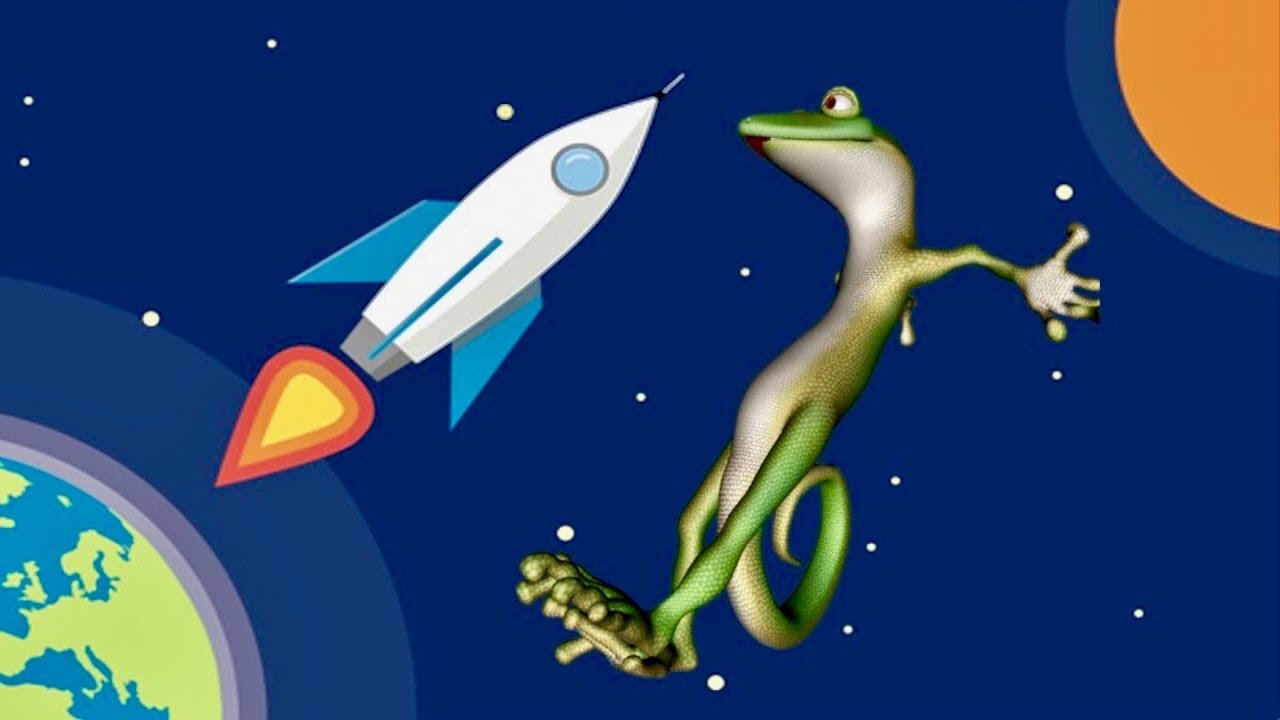Premium Only Content

How Gecko Lizards Help NASA Grab Things In Space
Gecko-inspired robot could help clean up space trash. A new device inspired by a gecko foot could be the solution to our space junk problem. NASA scientists, in collaboration with engineers at the University of Stanford, have designed a robot that can “stick” to objects just like a gecko – and help clean up the trash that’s collected from more than five decades of space exploration.There are at least 500,000 pieces of debris currently floating around Earth, according to NASA. These pieces of broken satellites and old rocket parts can travel up to speeds of 17,500 miles per hour and have already caused millions of dollars of damage and losses to working equipment. Earth’s clogged up orbit is also extremely dangerous to astronauts, satellites and any space tourists who might exit the atmosphere in the future.
Right now, there’s nothing that picks up space junk as the technologies that can grab and discard things on Earth don’t work in space. But this lizard-inspired tool can latch onto smooth surfaces and handle up to 880 pounds. The research was published June 29 in Science Robotics.
“What we’ve developed is a gripper that uses adhesives inspired by how geckos stick to walls,” Mark Cutkosky, a senior author on the paper, told Stanford University News.
Except it’s not that simple: gecko feet aren’t actually sticky. The tiny lizards have thousands of microscopic hairs that merely act like an adhesive. These hairs are angled, and a gecko has to place their foot at a certain angle in order to attach it to an object. To detach, the animal just has to pull its foot in a different direction.
To imitate the animal, the device has small pads equipped with thousands of silicone rubber hairs. These hairs, which are 10 times smaller than the ones on our heads, have the same tilt as the hairs on the gecko’s feet. And just like the lizard, the gripper pulls off in a different direction to remove itself from an object.
The out-of-box approach was necessary as most conventional materials don’t hold up in space. Suction cups need an atmosphere, magnets don’t stick to aluminum, nets might push the junk around or potentially add to the debris and the chemicals that make tape sticky can’t withstand the universe’s extreme temperatures.
The robot has already tested well in labs and aboard a zero-gravity airplane, where it easily grabbed shapes typical of space debris, like spheres and cylinders.
“Nothing happens when he lets go,” Cutkosky told The Verge. “It doesn’t jerk the object, and that was the key requirement. It’s an absolutely smooth, effortless detachment.”
Next, the team will start testing the device outside the International Space Station. Researchers also hope this robot could eventually help make repairs and inspections on the outside of spacecrafts or satellites.
Snooper (116 bpm) by Dhruva Aliman
Amazon- https://amzn.to/2MbZ3TF
https://music.apple.com/us/artist/dhruva-aliman/363563637
https://dhruvaaliman.bandcamp.com/album/snooper
http://www.dhruvaaliman.com/
Spotify - https://open.spotify.com/artist/5XiFCr9iBKE6Cupltgnlet
-
 49:16
49:16
Knowledge Land
1 month agoThe Prehistoric Volcano That Nearly Wiped Out All Humanity - Full Documentary
562 -
 7:29
7:29
Clickingcliff
2 years agoNASA Space Shuttle Discovery Review
12 -
 LIVE
LIVE
vivafrei
15 hours agoLive with Enrique Tarrio! Jan. 6 Lawfare ON STEROIDS! Proud Boys & Beyond!
1,230 watching -
 LIVE
LIVE
Ben Shapiro
1 hour agoEp. 2131 - Trump and Musk Bring The CHAINSAW
4,122 watching -
 1:12:31
1:12:31
Russell Brand
2 hours agoTrump’s Trade Wars: Power Plays and Global Repercussions – SF531
19K32 -
 LIVE
LIVE
The Charlie Kirk Show
1 hour agoTrump Gets His Cabinet + Killing the USAID Grift + Why Bud Light Collapsed | Frericks | 2.4.2025
12,617 watching -
 LIVE
LIVE
Simply Bitcoin
1 hour agoDid America JUST Change The Bitcoin Nation State Race Forever?! | EP 1175
323 watching -
 37:13
37:13
Grant Stinchfield
1 hour agoBill Gates is Making the Media Rounds Today to Push the Vax and Stop RFK Jr.
858 -
 LIVE
LIVE
TheAlecLaceShow
3 hours agoGuest: Rep. Burgess Owens | Trump Wins with Mexico & Canada | DNC Diversity | The Alec Lace Show
239 watching -
 1:00:28
1:00:28
The Dan Bongino Show
4 hours agoTrump’s Most Important Fight To Date (Ep. 2415) - 02/04/2025
486K884